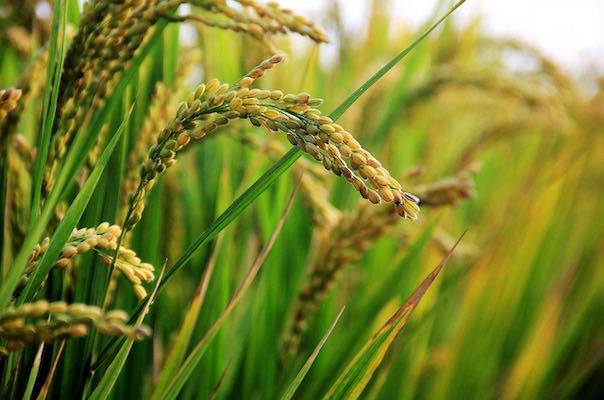



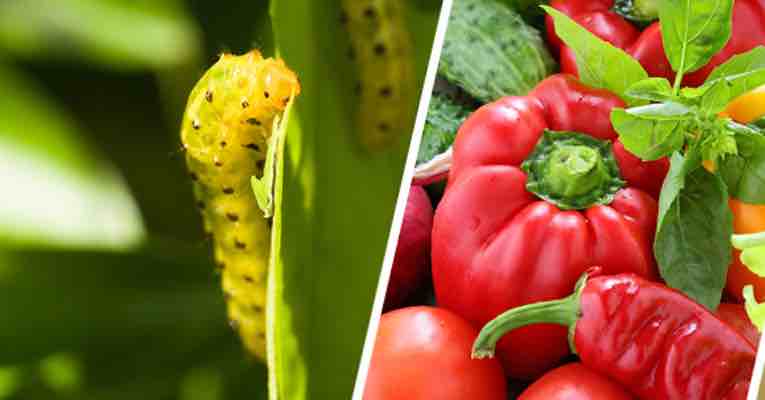


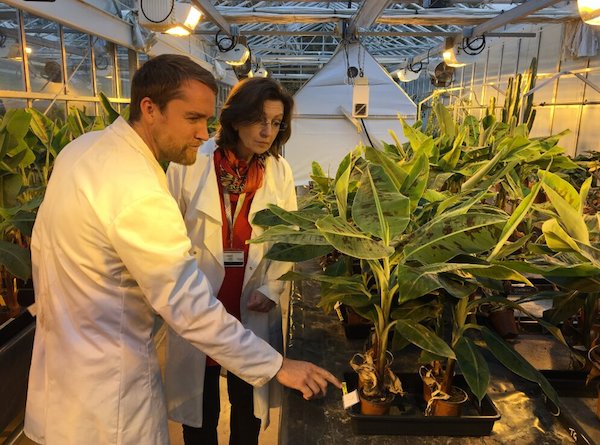
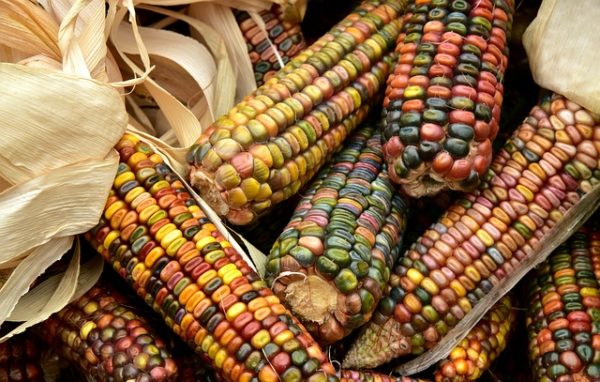

By Mathew Reynolds, Wheat Physiologist at, CIMMYT
First post of our “Global Collaboration” series
Wheat is the most widely grown crop in the world, currently providing about 20 percent of human calorie consumption. However, demand is predicted to increase by 60 percent within just 30 years, while long-term climate trends threaten to reduce wheat productivity, especially in less developed countries.
For over half a century, the International Wheat Improvement Network (IWIN), coordinated by CIMMYT, has been a global leader in breeding and disseminating improved wheat varieties to combat this problem, with a major focus on the constraints of resource poor farmers.
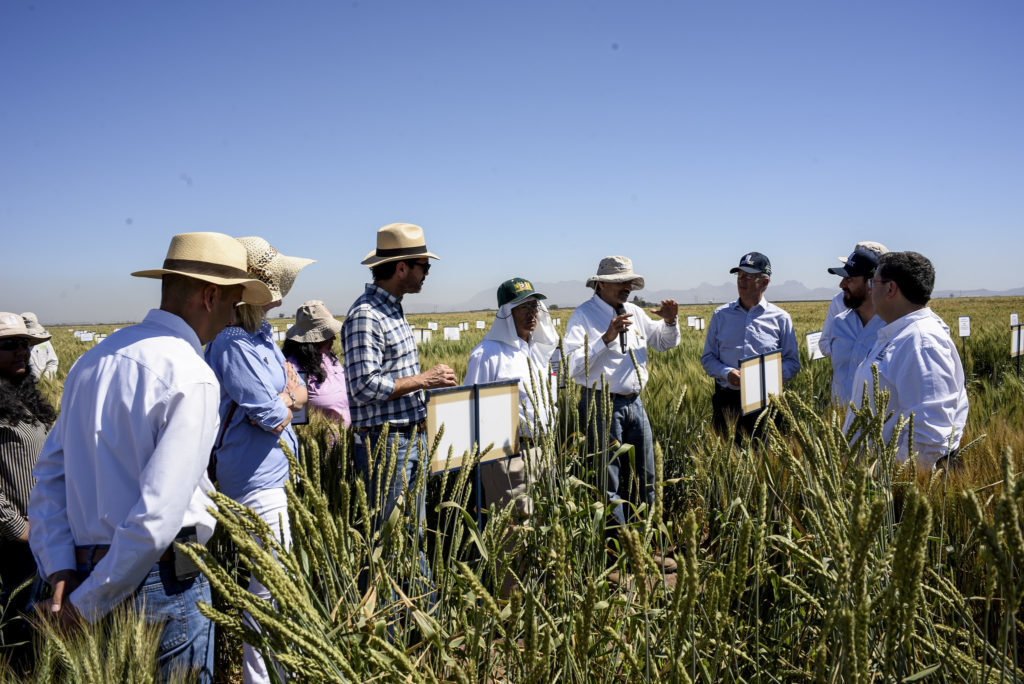
Two complementary networks — the Heat and Drought Wheat Improvement Consortium (HeDWIC) and the International Wheat Yield Partnership (IWYP) — are helping to meet the future demand for wheat consumption through global collaboration and technological partnership.
By harnessing the latest technologies in crop physiology, genetics and breeding, network researchers support the development of new varieties that aim to be more climate resilient, in the case of HeDWIC and with higher yield potential, in the case of IWYP.
These novel approaches to collaboration take wheat research from the theoretical to the practical and incorporate science into real-life breeding scenarios. Methods such as screening genetic resources for physiological traits related to radiation use efficiency and identifying common genetic bases for heat and drought adaptation are leading to more precise breeding strategies and more data for models of genotype-by-environment interaction that help build new plant types and experimental environments for future climates.
IWYP addresses the challenge of raising the genetic wheat yield potential of wheat by up to 50 percent in the next two decades. Achieving this goal requires a strategic and collaborative approach to enable the best scientific teams from across the globe to work together in an integrated program. TheIWYP model of collaboration fosters linkages between ongoing research platforms to develop a cohesive portfolio of activities that maximizes the probability of impact in farmers’ fields IWYP research uses genomic selection to complement the crossing of complex traits by identifying favorable allele combinations among progeny. The resulting products are delivered to national wheat programs worldwide through the IWIN international nursery system.
Recently, IWYP research achieved genetic gains through the strategic crossing of biomass and harvest index — source and sink — an approach that also validates the feasibility of incorporating exotic germplasm into mainstream breeding efforts.
In the case of HeDWIC, intensified — and possibly new — breeding strategies are needed to improve the yield potential of wheat in hotter and drier environments. This also requires a combined effort, using genetic diversity with physiological and molecular breeding and bioinformatic technologies, along with the adoption of improved agronomic practices by farmers. The approach already has proof of concept in the release and adoption of three heat and drought tolerant lines in Pakistan.
It is imperative to build increased yield and climate-resilience to into future germplasm in order to avoid the risk of climate-related crop failure and to maintain global food security in a warmer climate. Partnerships like HeDWIC and IWYP give hope to meeting this urgent food security challenge.
Further readings:
https://www.hedwic.org/resources.htm
https://royalsocietypublishing.org/doi/full/10.1098/rspb.2012.2190
An economist’s perspective on plant sciences: Under-appreciated, over-regulated and under-funded
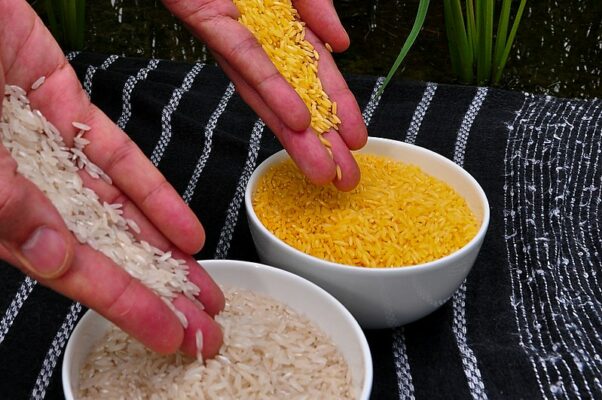
Modified crops such as Golden Rice could have major benefits for people in developing nations. Image credit: IRRI Licensed under CC BY 2.0
By David Zilberman, Professor and Robinson Chair, Agriculture and Resource Economics, UC Berkeley
When I started working on agronomical issues in the 1970s, the most exciting technologies were related to water, machinery, and harvesting. Plant genetics seemed to be quite a boring enterprise. But as I became familiar with the Green Revolution, I realized the importance of plant research, and that the golden rule in agriculture is to find the optimal mixture between biotic and abiotic technologies. As an economist working on technology, I started to realize that the past fifty years have drastically changed the way plant sciences are done, and the potential and value of their product.
The discovery of the innerworkings of a cell, combined with the power of computers and precision tools, has changed medicine, but it has perhaps the potential to make an even bigger impact on plant sciences and agriculture. I have been working on the economics and policy aspects of agricultural biotechnology (see also Journal of Economic Perspectives). Despite the restrictions on genetically modified varieties, they increase yields and make food more affordable for the poor. They also reduce greenhouse gas emissions and actually improved human health (by reducing exposure to chemicals and aflatoxin). But biotechnologies have had limited impact because of regulations that limit their use mostly to feed and fiber crops, and the practical ban on use of GMOs in Europe and parts of Africa.
It’s clear that developing countries can be the major beneficiaries of these technologies. They can save billions of dollars and address severe health and malnourishment problems. Furthermore, applications of biotechnology on food crops can reduce food security problems and increase access to valuable fresh produce throughout the world. Modern biotechnology can provide tools to accelerate adaptation to climate change, and I am surprised that some of the organizations most aware of climate change don’t recognize the value of biotechnology to address it.
Plant science research has already made major achievements using traditional and advanced tools to provide better varieties and improve the global food situation in a world with a fast growing population. There is a large body of literature documenting the rate of return of research, and much of the achievements have been the development of new varieties. The literature suggests that public research that provided much of the benefit has been underfunded, and its funding is declining. Thus, plant research hasn’t reached its potential.
Thus far, applied research in plant sciences at many universities concentrate on grasses, like corn and wheat, but underemphasize trees and algae. One explanation to the emphasis on grasses is the immediate economic benefits they seem to provide. With all the modern tools of biology, the big challenges and some of the most radical and relevant knowledge can come from the study of trees and algae within the context of forest and oceans. Studies of these specimens will enhance our understanding of living systems, is crucially important from a macro-ecological perspective, and from a practical perspective of finding new materials, new foods and efficient sources of energy.

Poplar is one of the most commonly used trees in plant science research. Image credit: Walter Siegmund
I believe that society tends to underinvest in plant sciences, both because science is underfunded in general and because of the regulations of biotechnology that limit their use, as mentioned above. The contribution of plant scientists to address problems of climate change, deforestation, food security, and environmental quality are under-emphasized and under-recognized. This leads to less investment in this area, less contribution, and less student interest. But more investment in plant sciences may provide better understanding of their impact and how to regulate them, and provide more promising applications. So we are in a vicious cycle of over-regulation and under-funding that mostly hurt regions and populations that are vulnerable, and reduce our capabilities to deal with global changes.
To move forward, we need to have more enlightened regulations that will allow us to take advantage of this incredible science and big jolts in terms of support for research in plant sciences. Enlightened regulations would balance benefits and risks, reduce the cost of access to modern biotechnologies. They also would allow efficient and mutually beneficial transfer of knowledge and genetic materials across locations. Plant sciences is one discipline where the distribution of efforts across locations globally can be especially beneficial as we can learn about the performance of plant systems throughout the world. Therefore, investments in plant sciences should be distributed globally. For example, a major effort to raise funding for 100 Chairs of Plant Sciences around the world, especially in developing countries, will be a good start. It should be associated with support for student research, as well as forums the exchange of new ideas. And finally, new investments in arboretums and greenhouses.
Plant sciences have been providing humanity essential knowledge that enabled the growth and evolution of human civilization without much fanfare. New tools increase its potential and the excitement and value of research in these areas. Society needs to expand their support to plant sciences to enable it to flourish around the world, as well as enlightened regulation to gain benefits from the fruits of this research.
By Atsuko Kanazawa, Igor Houwat, Cynthia Donovan
This article is reposted with permission from the Michigan State University team. You can find the original post here: MSU-DOE Plant Research Laboratory
Atsuko Kanazawa is a plant scientist in the lab of David Kramer. Her main focus is on understanding the basics of photosynthesis, the process by which plants capture solar energy to generate our planet’s food supply.
This type of research has implications beyond academia, however, and the Kramer lab is using their knowledge, in addition to new technologies developed in their labs, to help farmers improve land management practices.
One component of the lab’s outreach efforts is its participation in the Legume Innovation Lab (LIL) at Michigan State University, a program which contributes to food security and economic growth in developing countries in Sub-Saharan Africa and Latin America.
Atsuko recently joined a contingent that attended a LIL conference in Burkina Faso to discuss legume management with scientists from West Africa, Central America, Haiti, and the US. The experience was an eye opener, to say the least.
To understand some of the challenges faced by farmers in Africa, take a look at this picture, Atsuko says.
“When we look at corn fields in the Midwest, the corn stalks grow uniformly and are usually about the same height,” Atsuko says. “As you can see in this photo from Burkina Faso, their growth is not even.”
“Soil scientists tell us that much farmland in Africa suffers from poor nutrient content. In fact, farmers sometimes rely on finding a spot of good growth where animals have happened to fertilize the soil.”
Even if local farmers understand their problems, they often find that the appropriate solutions are beyond their reach. For example, items like fertilizer and pesticides are very expensive to buy.
That is where USAID’s Feed the Future and LIL step in, bringing economists, educators, nutritionists, and scientists to work with local universities, institutions, and private organizations towards designing best practices that improve farming and nutrition.
Atsuko says, “LIL works with local populations to select the most suitable crops for local conditions, improve soil quality, and manage pests and diseases in financially and environmentally sustainable ways.”
At the Burkina Faso conference, the Kramer lab reported how a team of US and Zambian researchers are mapping bean genes and identifying varieties that can sustainably grow in hot and drought conditions.
The team is relying on a new technology platform, called PhotosynQ, which has been designed and developed in the Kramer labs in Michigan.
PhotosynQ includes a hand-held instrument that can measure plant, soil, water, and environmental parameters. The device is relatively inexpensive and easy to use, which solves accessibility issues for communities with weak purchasing power.
The heart of PhotosynQ, however, is its open-source online platform, where users upload collected data so that it can be collaboratively analyzed among a community of 2400+ researchers, educators, and farmers from over 18 countries. The idea is to solve local problems through global collaboration.
Atsuko notes that the Zambia project’s focus on beans is part of the larger context under which USAID and LIL are functioning.
“From what I was told by other scientists, protein availability in diets tends to be a problem in developing countries, and that particularly affects children’s development,” Atsuko says. “Beans are cheaper than meat, and they are a good source of protein. Introducing high quality beans aims to improve nutrition quality.”
But, as LIL has found, good science and relationships don’t necessarily translate into new crops being embraced by local communities.
Farmers might be reluctant to try a new variety, because they don’t know how well it will perform or if it will cook well or taste good. They also worry that if a new crop is popular, they won’t have ready access to seed quantities that meet demand.
Sometimes, as Atsuko learned at the conference, the issue goes beyond farming or nutrition considerations. In one instance, local West African communities were reluctant to try out a bean variety suggested by LIL and its partners.
The issue was its color.
“One scientist reported that during a recent famine, West African countries imported cowpeas from their neighbors, and those beans had a similar color to the variety LIL was suggesting. So the reluctance was related to a memory from a bad time.”
This particular story does have a happy ending. LIL and the Burkina Faso governmental research agency, INERA, eventually suggested two varieties of cowpeas that were embraced by farmers. Their given names best translate as, “Hope,” and “Money,” perhaps as anticipation of the good life to come.
Another fruitful, perhaps more direct, approach of working with local communities has been supporting women-run cowpea seed and grain farms. These ventures are partnerships between LIL, the national research institute, private institutions, and Burkina Faso’s state and local governments.
Atsuko and other conference attendees visited two of these farms in person. The Women’s Association Yiye in Lago is a particularly impressive success story. Operating since 2009, it now includes 360 associated producing and processing groups, involving 5642 women and 40 men.
“They have been very active,” Atsuko remarks. “You name it: soil management, bean quality management, pest and disease control, and overall economic management, all these have been implemented by this consortium in a methodical fashion.”
“One of the local farm managers told our visiting group that their crop is wonderful, with high yield and good nutrition quality. Children are growing well, and their families can send them to good schools.”
As the numbers indicate, women are the main force behind the success. The reason is that, usually, men don’t do the fieldwork on cowpeas. “But that local farm manager said that now the farm is very successful, men were going to have to work harder and pitch in!”
Back in Michigan, Atsuko is back to the lab bench to continue her photosynthesis research. She still thinks about her Burkina Faso trip, especially how her participation in LIL’s collaborative framework facilitates the work she and her colleagues pursue in West Africa and other parts of the continent.
“We are very lucky to have technologies and knowledge that can be adapted by working with local populations. We ask them to tell us what they need, because they know what the real problems are, and then we jointly try to come up with tailored solutions.”
“It is a successful model, and I feel we are very privileged to be a part of our collaborators’ lives.”
This article is reposted with permission from the Michigan State University team. You can find the original post here: MSU-DOE Plant Research Laboratory